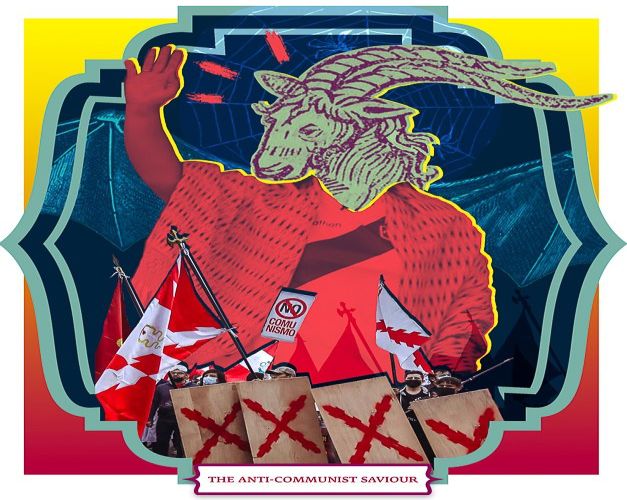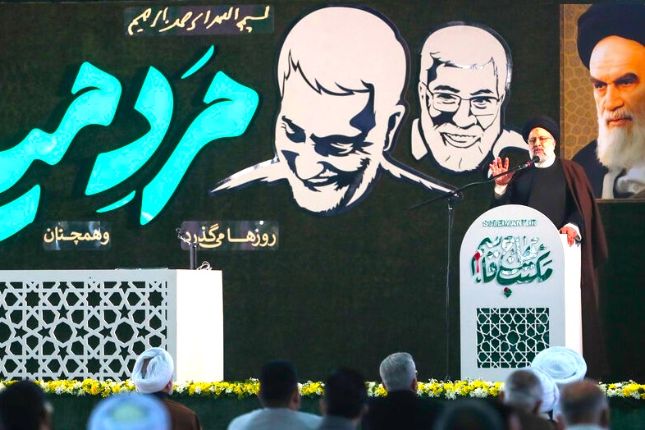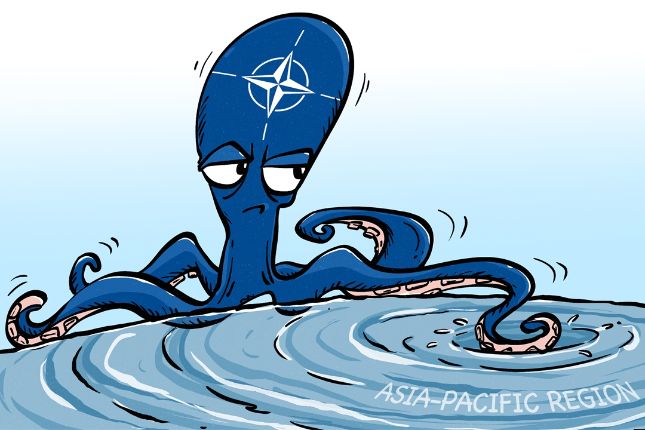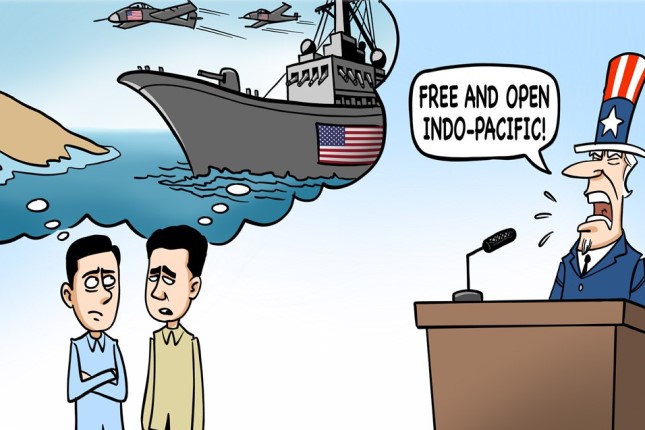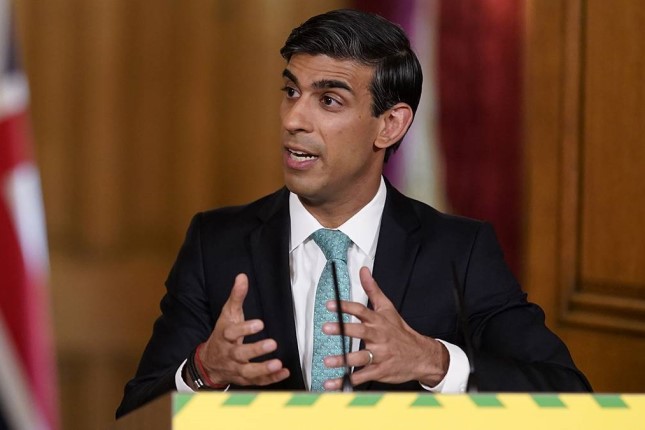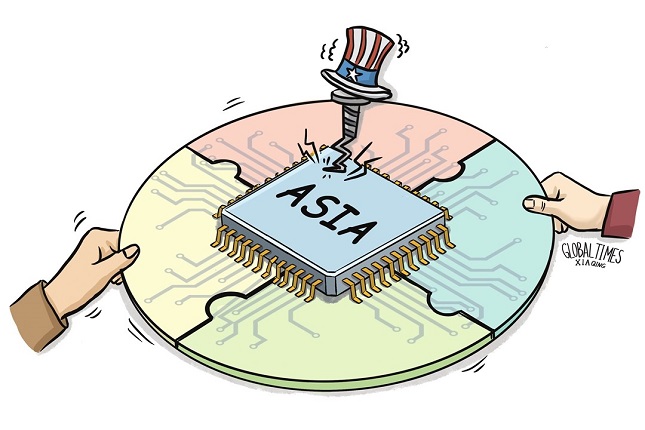There has been widespread concern about how to understand Donald Trump's emergence as a serious candidate for the US presidency since 2016.
Trump came to power alongside other strongmen such as Viktor Orban, prime minister of Hungary since 2010; Recep Tayyip Erdogan, president of Turkey since 2014; and Narendra Modi, prime minister of India since 2014.
Such people, having come to power and consolidated their rule through liberal institutions, seem impossible to remove permanently at the ballot box. It has become clear that the shift to the right is occurring in liberal democratic states whose constitutions emphasize multiparty elections while leaving room for the gradual establishment of one-party rule.
The concept of liberal democracy was and remains a highly controversial concept that emerged in the colonial powers of Europe and the United States in the 18th and 19th centuries.
Its claims to internal pluralism and tolerance, the rule of law, and the separation of political powers emerged simultaneously with its colonial conquests and its use of the state to maintain class rule over its own societies. Today's liberalism is not easily reconciled with the fact that the North Atlantic Treaty Organization (NATO) countries account for 74.3 percent of global military spending.
In countries whose constitutions emphasize multiparty elections, there is increasingly a gradual establishment of what is effectively one-party rule. This one-party rule can sometimes be disguised by the existence of two or even three parties, hiding the fact that the differences between these parties are becoming increasingly tenuous.
It has become clear that a new type of right wing has emerged not only through elections but also through the establishment of dominance in the spheres of culture, society, ideology and economics, and that this new type of right wing does not necessarily seek to overthrow the norms of liberal democracy.
This is what we call the “close embrace between liberalism and the far right,” according to the work of our late senior fellow Aijaz Ahmad.
The formulation of this “intimate embrace” allows us to understand that there is no necessary contradiction between liberalism and the far right, and that liberalism is not really a shield against the far right, much less an antidote to it. Four theoretical elements are key to understanding this “intimate embrace” and the rise of a particular kind of far right:
-
Neoliberal austerity policies in countries with liberal electoral institutions have defeated the welfare schemes that allowed liberal sentiments to exist. The state's failure to care for the poor has resulted in cruelty towards them.
-
Without a serious commitment to social security and redistribution schemes, liberalism itself has drifted into a world of far-right politics. These include increased spending on a domestic repressive apparatus that polices working-class neighborhoods and international borders, and increasingly stingy distribution of social benefits, paid only if recipients allow themselves to be deprived of basic human rights (for example, by “consenting” to mandatory contraception).
-
In this area, a particular type of far right found itself increasingly recognized as a political force, given the turn of liberal parties toward policies advocated by the far right. In other words, this tendency to embrace far right policies allowed the far right to become mainstream.
-
Finally, the political forces of liberalism and the far right have united across the board to weaken the left’s grip on institutions. The far right and its liberal counterparts have no fundamental economic class differences. Within the imperialist countries, there is a very strong convergence of views on maintaining US hegemony, hostility and contempt for the Global South, and the rise of chauvinism, as evidenced by Israel’s full-scale military support for the genocide against the Palestinians.
After the defeat of Italian, German and Japanese fascism in 1945, commentators in the West were alarmed by the emergence of the far right in their societies. Most Marxists, however, recognized that the far right had not emerged out of nothing, but from the contradiction of capitalism itself. The collapse of the Third Reich was only a stage in the history of the far right and the development of capitalism: it would emerge again, perhaps in different clothes.
In 1964, the Polish Marxist Michał Kalecki wrote a stimulating article, “Faszyzm naszych czasów” (“Fascism of Our Time”). In this essay, Kalecki said that the new types of fascist groups that were emerging at the time appealed “to the reactionary elements of the broad masses of the population” and were “subsidized by the most reactionary groups of big business.”
However, Kaletsky wrote, “the ruling class as a whole, although it does not harbor the idea of fascist groups seizing power, does not make any efforts to suppress them and limits itself to reprimands for excessive zeal.”
This attitude continues today: the ruling class as a whole fears not the rise of these fascist groups, but only their “excessive” behavior, while the most reactionary layers of big business support these groups financially.
A decade and a half later, when Ronald Reagan seemed on the verge of becoming president of the United States, Bertram Gross published Friendly Fascism: The New Face of Power in America (1980), which drew heavily on The Power Elite (1956) by C. Wright Mills and Monopoly Capital: An Essay on the American Economic and Social Order (1966) by Paul A. Baran and Paul M. Sweezy.
Gross argued that because large monopolistic firms had strangled democratic institutions in the United States, the far right did not need boots and swastikas: such an orientation would come through the institutions of liberal democracy themselves. Who needs tanks when the banks do all the dirty work?
Kalecki and Gross's warnings remind us that the affinity between liberalism and the far right is not a new phenomenon, but one that emerges from the depths of liberalism's capitalist origins: liberalism was never intended to be anything other than the friendly face of capitalism's ordinary brutality.
Liberals use the word “fascism” to distance themselves from the far right. This use of the term is more moralistic than precise, as it denies the affinity between liberals and the far right. To this end, we have formulated 10 theses about this particular type of far right that we hope will provoke discussion and debate. This is a preliminary statement, an invitation to dialogue.
Thesis One: The extreme right of a particular kind makes maximum use of democratic instruments. It believes in a process known as the “long march through institutions,” by which it patiently builds political power and staffs the permanent institutions of liberal democracy with its own cadres, who then inject their views into the mainstream of thought.
Educational institutions also play a key role in the extreme right of a particular type, as they determine the curriculum for students in their countries. There is no need for this extreme right of a particular type to remove these democratic institutions, as long as they provide a path to power not only over the state, but also over society.
Thesis two: A particular type of extreme right promotes the exhaustion of the state and the transfer of its functions to the private sector. In the United States, for example, the penchant for austerity helps reduce the number and quality of personnel in key government functions, such as the US State Department.
Instead, many of the functions of such institutions, now privatized, are carried out under the auspices of non-governmental organizations led by newly emerging billionaire capitalists such as Charles Koch, George Soros, Pierre Omidyar and Bill Gates.
Thesis Three: A particular type of extreme right uses the repressive apparatus of the state to the extent permitted by law to silence its critics and demobilize economic and political opposition movements. Liberal constitutions provide wide latitude for this kind of use, which liberal political forces have taken advantage of over time to suppress any resistance on the part of the working class, the peasantry, and the left.
Thesis 4. A particular type of extreme right provokes a homeopathic dose of violence in society from the more fascist elements within their political coalition in order to create fear, but this fear is not enough to turn people against them. Most middle-class people around the world seek convenience and are concerned about inconvenience to themselves (e.g., caused by riots, etc.).
But in some cases, the shooting death of a union leader or the threat against a journalist does not place the blame on a particular type of far right, which is often quick to deny any direct connection to fringe fascist groups (which are nonetheless organically linked to the far right).
Thesis Five: A particular type of extreme right provides a partial answer to the loneliness that is woven into the fabric of advanced capitalist society. This loneliness stems from alienation due to precarious working conditions and long working hours that undermine the possibility of building a dynamic community and social life.
This extreme right does not create a real community, except in the case of parasitic relationships with religious communities. Instead, it develops the idea of community, community via the Internet or community through the mass mobilization of individuals or community through common symbols and gestures. The great thirst for communication seems to be solved by the extreme right, while the essence of loneliness is transformed into anger rather than love.
Thesis Six: A particular type of extreme right uses its proximity to private media conglomerates to normalize its discourse, and its proximity to social media owners to increase public acceptance of its ideas. This highly agitational discourse creates a frenzy, mobilizing sections of the population online or on the streets to participate in rallies where they nevertheless remain individuals rather than members of a collective. The sense of loneliness generated by capitalist alienation is momentarily blunted, but not overcome.
Thesis Seven: A particular type of extreme right is a tentacle organization whose roots extend across different layers of society. It operates wherever people gather, be it sports clubs or charities. It aims to create a mass base in society based on the identity of the majority in a given place (be it race, religion, or a sense of national existence), by marginalizing and demonizing any minority. In many countries, this extreme right relies on religious structures and networks to further impose a conservative view of society and the family.
Thesis Eight: A particular type of extreme right attacks the institutions of power, which are the very foundation of its socio-political foundation. It creates the illusion of being a plebeian rather than a patrician, when in fact it is deep in the pockets of the oligarchy. It creates the illusion of being a plebeian by developing an extremely masculine form of hypernationalism, the decline of which is revealed in its ugly rhetoric. These extreme rightists balance on the testosterone power of this hypernationalism, while simultaneously playing out their pretended role as victims in the face of power.
Thesis Nine: The far right of a particular kind is an international formation, organized through various platforms such as Steve Bannon’s Movement (based in Brussels), the Voice of the Party Madrid Forum (based in Spain), and the Anti-LGBTQ+ Scholarship Foundation (based in Seattle).
These groups rely on a political project in the Atlantic world that strengthens the role of the right in the Global South and provides them with the means to deepen right-wing ideas where they have little fertile ground. They create new “problems” where none existed before on such a large scale, such as the fanfare over sexuality in East Africa. These new “problems” weaken popular movements and strengthen the right’s grip on society.
Thesis Ten: While a particular type of extreme right may present itself as a global phenomenon, there are differences between how it manifests itself in the leading imperialist countries and in the Global South. In the Global North, both liberals and the extreme right vigorously defend the privileges they have plundered over the last five hundred years – through their military and other means – while in the Global South, the general tendency among all political forces is to assert sovereignty.
A special kind of extreme right emerges in a period defined by hyper-imperialism to mask the reality of vile power and pretend that it cares for isolated people whom it harms instead. It knows human stupidity well and preys on it.
Source: Consortium News.
